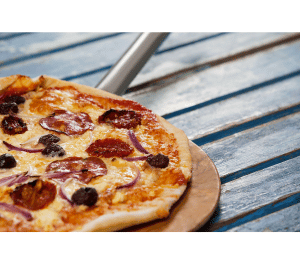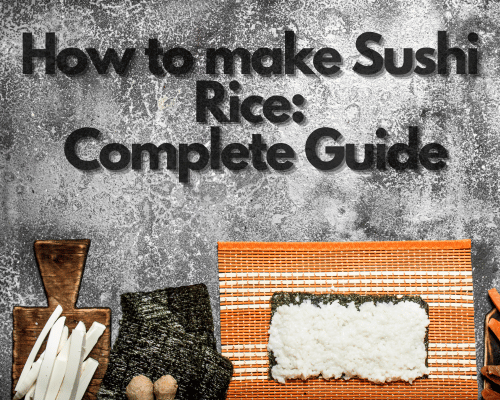Pizza Peel is a helping hand for baking Pizza. They are used to place the pizza into the hot oven and to take it out after completing the baking. This helping hand should work properly. Otherwise, it would turn out of no use. To make it work properly it’s needed to be taken care of. Undoubtedly, everything needs to be taken care of if you want to make it work longer. Today, I will write how to clean a pizza peel in this article.
What is a pizza peel?
A pizza peel is a wide spoon designed to bake a pizza efficiently without spilling off any ingredient. It is used for three tasks – transferring the raw pizza to the oven, turning the pizza for even baking, and retrieving the cooked pizza from the oven. Also, it saves your fingers from burning when you bake the pizza.
A pizza peel has two parts, one is the flat carrying surface, and another is the handle. The carrying surface is the place where you lay the dough or carry the pizza. The handle helps you to hold the peel with stability. Also, it extends the reach of the peel to the oven.
Pizza peels can be made of wood, metal, or composite materials. Wooden pizza peels have a body and a handle made of wood, and metal peels are entirely made of either aluminum or stainless steel, and composite pizza peels combine wood and resin. Some metal pizza peels have wooden handles.
How to use a pizza peel?
- Pick the right-sized pizza peel to prepare the pizza. Also, don’t forget to preheat the pizza oven.
- Dust the peel with flour or cornmeal so that the dough won’t stick to it. A good rule of thumb is to use a 50-50 mixture of plain flour and semolina flour on the peel. The semolina flour makes the peel surface smoother and helps the dough slide off easier. Spread the dust evenly on the peel.
- Carefully lay the raw dough on the peel and fold up its edges slightly to contain the toppings. While putting sauce on the dough, make sure it doesn’t catch the peel surface. If you spill the sauce, it will stick to the dough and hamper the preparation.
- After decorating the pizza with sauce and toppings, lightly jerk the peel with a swift back-and-forth motion. It will show whether the dough loosely slides or not. If the dough still sticks to the surface, gently lift the edges and add more dust.
- Transfer the dough to the oven by gently sliding it off the peel. Don’t angle the peel higher while transferring; it will make the toppings fall.
- Slide the peel under the pizza in the middle of baking to turn it. It will help you to cook the pizza evenly. Once fully baked, slide the peel again to fetch the pizza from the oven.
- If the peel is metal, you can cut the pizza directly on the peel and serve it. If the peel is wooden, slide the pizza off onto a serving dish after retrieving to cut and serve it.
How to take care of Pizza Peel?
Well, in terms of taking care of a Pizza Peel, the first thing that comes into our mind is cleaning the Pizza Peel. You really need a clear explanation for it. And here I am going to explain this to you.
How to clean a Pizza Peel?
It actually depends on what type of Pizza Peel you are using. There are basically three types of Pizza Peel:
- Wooden
- Metal
- Composite
Wooden Pizza Peel:

Wooden Pizza Peels are the oldest and traditional one in Pizza baking history. They are those who need special treatment to taken care of. This one is the heaviest option among Pizza Peels as well.
The Wooden surface of the Peel is highly unsuitable for water. While cleaning the wooden peel you must not sink it in a dishwasher. After using you can clean it with a sponge or cloth with warm water. Dip the sponge or cloth in soapy water or warm water and rinse the wooden peel carefully. Remember, you never use direct water on a wood peel.
Otherwise, it would crack or get warped. White vinegar is also very useful to clean a wooden pizza peel. You must dry the Peel properly before keeping it anywhere you want.
Along with cleaning, it is also needed to take proper steps to increase the longevity of the Wooden Pizza Peel. For that, you can apply 1-2 tablespoons of food-grade mineral oil and spread it nicely on the wooden surface.
It will consist the moisture of your Pizza Peel for long. You can apply in once in 3/4 months. It is also applicable once in a month if you are baking Pizzas on a regular basis.
The plus tip for easier work and care is, apply some flour or cornmeal on the wooden peel before placing the dough on it. It would prevent sticking the dough on the peel. As a result, it would become easier for you to clean the peel.
Metal Pizza Peel:

Metal Pizza Peels are the thinnest Pizza Peels. As it is strong enough to take the weight of the dough and easy to handle. These Pizza Peels are made of Stainless Steel or Aluminium.
The dough tends more to stick on Metal Peels. You can apply flour or cornmeal before placing the dough on it. If you are not likely to face this situation, you can use two peels to work with.
A wooden Peel will help you to place the pizza into the oven and you can use the metal peel to take the pizza out.
As dough sticks easily on the metal peel. You need to wash it with scrubbing properly. Scrub with warm water or soapy sponge to clean a metal pizza peel.
Here is a guide on USING PIZZA STONE WITHOUT A PIZZA PEEL
Composite Pizza Peel:

Composite Pizza Peels are those short-handled peels that you see often in the restaurant’s pizzas are served with. This kind of Peels are made of a mixture of wood and resins.
As resins are included in these peels it allows you to clean it with water. So, it is dishwasher safe and easy to clean with water.
Should you choose a wooden or metal pizza peel?
You need both wooden and metal pizza peels to perfectly cook a pizza. Wooden and metal peels function in different ways.
Wooden pizza peels are weaker than metal ones in many ways. Moisture, odors, stains, heat affect wooden peels faster, making the peels warped or charred. Consequently, they transfer the rotten smell to the pizza while cooking. Conversely, metal pizza peels can withstand all these external forces, leaving no rancid smell to pizza. However, if the handle of a metal peel is short, heat can reach your hands.
Maintaining a metal pizza peel is easier than a wooden peel. Both need constant scraping, washing, and drying between uses, but woods comparatively require more care than metals in these processes.
If you consider the aesthetic feeling, wooden peels will surely win this time. Metal peels don’t give the classy, Italian vibe which wooden peels can ensure.
Wooden or metal – this debate creates high tension when it comes to handling the pizza. Before you transfer the raw dough to the oven, it sticks to the metal peel easily. You can flower the peel to solve this problem, yet transferring the dough with a metal peel is challenging.
Contrastingly, a raw or cooked pizza tends less to stick to the wooden peel. With adequate dusting, wooden peels provide easy transferring of pizzas to the oven. Again, wooden peels are thicker, don’t slide easily under pizzas, making turning and retrieving them harder. Thanks to metal peels, they smoothly slide under pizzas due to their thinner body. They are highly suitable to turn pizzas for even baking and retrieving after cooking.
Let’s come to a final remark of this debate. Buy a wooden peel and a metal peel; use one to transfer the dough and another to retrieve the cooked pizza. If you don’t want to buy two peels, buy a wooden peel first and practice using it. When you are experienced enough, go for a metal pizza peel.
Prevent your pizza peel from warping
Wooden pizza peels experience warping, and it is pretty common. To prevent warping, decrease the direct contact of the wooden peel with water and heat as much as possible. However, it is not the only solution to prevent your pizza peel from warping. Regular oiling, cleaning, and disinfecting will ensure the peel’s health in the long run. Use mineral oil only to season your wooden peel to prevent warping or cracking. Applying mineral oil to the peel is not complicated either.
- Before the first use of the peel, pour 1-2 tablespoons of mineral oil on it. Take a dry cloth to spread the oil lightly in the peel. Increase the oil amount according to the length of the peel.
- Make sure the oil evenly covers the entire peel. Wait until the peel absorbs the oil. Once absorbed, dry the peel in the air, and your peel will be ready for use.
- Oil your wooden pizza peels every three months. If you frequently make pizza, apply mineral oil to the peel once every month.
You may think that olive oil or vegetable oil will work if you don’t have mineral oil. Not olive oil or vegetable oil will create a weird taste reacting with the raw dough.
Cleaning or sanitizing is equally necessary as oiling. Dip your peel once into the mild, soapy water and get the peel out. Gently scrub it to remove debris with a soft scrubber or scourge pad. Rinse off soap residue, wipe off the peel with a sanitizing wipe, and finally dry it with a clean towel.
Instead of dipping the peel, you can dip a sponge or cloth in the soapy water and use it to clean the peel. Since water is harmful to wood, applying white vinegar to disinfect the wood would be safe. Never think of using a dishwasher for cleansing. Clean your wooden peel every time you use it and air-dry it properly.
What would you do if your peel is already warped? Don’t worry; there is a DIY trick to straighten the warped wood. Flip the peel to keep the warped side facing the ground. Now put a hard and solid object like a heavy book or brick on the peel. Leave it as it is overnight, and the curve will be straightened.
Maintenance of aluminum and stainless-steel pizza peels is easier than wooden peels, yet they need cleansing with care. They don’t require coating with oil. War water would be best to soak the metal peel to loosen food particles.
Mineral oil for wooden pizza peels
Mineral oil is used not only for coating wooden pizza peels but also for other working equipment. There is a line of difference between oil used for pizza peels and oil used for other tools.
Petroleum is the source from where mineral oils are derived from. Not every mineral oil has the same viscosity level. As a result, applying heavy oil will not work on a tool that requires light oil. Wooden peels need lower viscosity oil, whereas butcher blocks or other cutting boards need higher oil.
Applying heavier oil on a wooden pizza peel won’t penetrate the wood easily. Even if you wash the oil, the oil will remain within the wood. Just imagine what would happen if the oil gets mixed with the dough. A lighter oil won’t create any of these troubles.
Also, make sure the mineral oil you bought for the peel is food-grade, and it will not poison the dough. Though olive oil and vegetable oil are strictly prohibited, walnut oil and food-grade waxes are safe for wooden peels. You better use only food-grade mineral oil since this is universally acknowledged.
Taking care of your wooden pizza peel
Unlike metal pizza peels, wooden pizza peels are much prone to heat and breakage. Due to their strong body and good shape, wooden peels can be a suitable substitute for chopping or cutting boards. If you think in that way, then it is wrong.
Cutting a pizza or food ingredient with any sharp equipment directly on a wooden peel will damage the peel surface. Consequently, the bad surface will lead to the sticking of raw dough and rough sliding of it to the oven. Say no to using a sharp tool on a wooden pizza peel.
Each time you cook a pizza, make sure to remove food residue from the peel after cooking. A nylon brush or wet cloth will be good to remove food particles. You can use a metal scraper also, but be gentle while scraping the peel with it. Otherwise, you will end up destroying the smoothness of the peel.
Please don’t leave your wooden pizza peel near heat for a long time since they can’t withstand heat. Move the peel as soon as you transfer the dough to the oven with it.
Always place or hang your peel in a dry place where air can pass. Damp settings will build up moisture, and moisture is purely harmful to wooden pizza peels.
Wooden peels absorb water and cause cracks. Therefore, avoid soaking the peel underwater. If you accidentally soak it, wipe off excess water and air-dry the peel until the wetness entirely evaporates.

Hey There, I’m Monica, Mom of two. This is my personal blog site. Here I write about Kitchen Tips Tricks, Recipes, and Review the products I use.
I hope you enjoy the article. Give me feedback on how I’m doing with my blog. I would appreciate it so much.
Have a great day! 🙂
[Follow me on Twitter]


